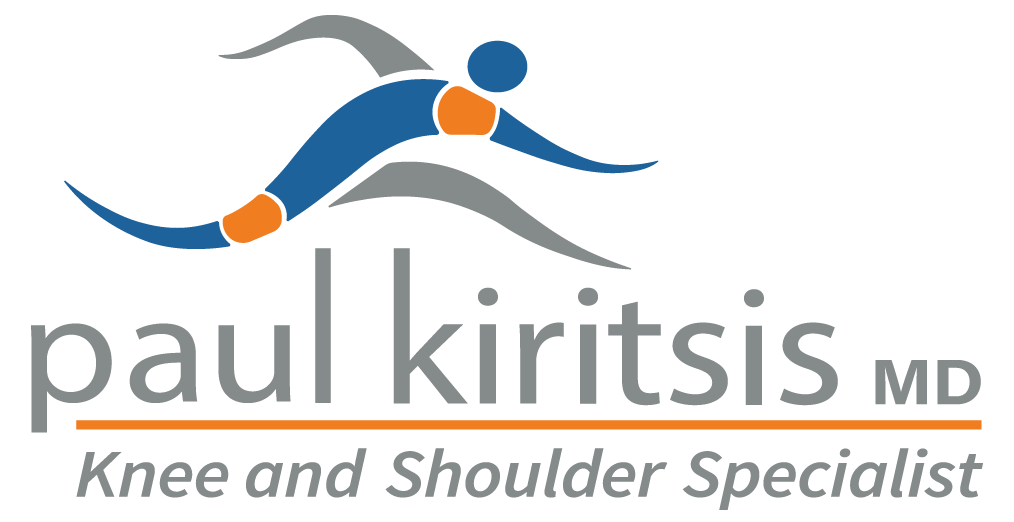Imagine this: you’re playing your favorite sport when suddenly, you feel a sharp pain in your knee. The pain is unbearable, and you’re left wondering, “how do I know if my knee injury is serious?” Identifying the symptoms of serious knee injuries is crucial for proper treatment and recovery.
In this blog post, I’ll explore the various types of knee injuries, their symptoms, and treatment options to help you better understand your knee pain and when to seek medical attention.
Key Takeaways
- Understand knee injuries to recognize severity and create an effective treatment plan.
- Serious knee injuries often present with severe pain, swelling, popping sounds & instability in the joint.
- Prompt medical intervention is necessary for proper healing. Prevention strategies include maintaining a healthy weight and warming up before physical activity.
Understanding Knee Injuries
Knee injuries can range from mild to severe, causing knee pain and swelling that may affect your daily activities and sports participation. Damage to any of the structures in the knee joint, such as:
- bones
- ligaments
- tendons
- muscles
- menisci
Knee pain, especially severe knee pain, can sometimes be a result of an injured leg.
Understanding the different types of knee injuries is key in determining the severity of the injury and planning the appropriate treatment. Some common types of knee injuries include:
- Ligament tears
- Meniscal tears
- Fractures
- Dislocations
Ligament Tears
Ligament tears, including those of the anterior cruciate ligament, are common knee injuries that often result from traumatic events or sports activities that involve twisting movements, such as basketball or skiing. These injuries can cause pain, instability, and swelling in the knee joint. The severity of a ligament injury depends on the associated symptoms, and most knee injuries can be diagnosed and treated based on these symptoms.
When determining the treatment for a knee ligament injury, factors such as symptoms, age, and general health are taken into account. Keep in mind that not all knee pain requires the same treatment approach, and in some cases, self-care measures, such as:
- Rest
- Ice
- Compression
- Elevation
May be sufficient to alleviate the pain.
Meniscal Tears
Meniscal tears are typically sports-related injuries where the menisci, the two C-shaped pieces of cartilage that cushion the knee joint, tear and become displaced within the knee. Symptoms of a meniscal tear may include pain, limited knee movement, and a locked knee, which occurs when the knee is unable to fully extend.
These symptoms can indicate a severe knee injury that may require surgical intervention, such as in the case of a bucket handle tear. A bucket handle tear is a type of meniscal tear where a large piece of the meniscus flips over and becomes lodged in the knee joint. Surgery is typically recommended for bucket handle tears to repair the damaged meniscus, restore stability, and alleviate pain in the affected knee.
Fractures
Fractures in the knee joint can occur due to high-impact injuries, such as falls or car accidents. Symptoms of a knee fracture may include:
- Intense pain
- Swelling
- Popping sounds
- Instability in the joint
Seeking medical attention if a fracture is suspected is of utmost importance, as prompt treatment can help prevent further complications and facilitate proper healing.
Treatment for a knee fracture may include:
- Rest
- Ice
- Compression
- Elevation
- Medications to manage pain and inflammation
In certain cases, surgery may be necessary to repair the damaged bone and restore function to the knee joint.
Dislocations
Knee dislocations are a serious medical condition characterized by pain, deformity, and instability in the joint. They often result from forceful impacts or sudden changes in direction and require prompt medical attention.
A dislocated patella, for example, can potentially cause damage to the cartilage or ligaments that keep the patella in place.
Prompt consultation with a sports medicine physician or orthopedic surgeon is crucial if a patellar dislocation or a quadriceps tendon injury is suspected, as they can provide an accurate diagnosis and appropriate treatment. Surgical intervention may be required to repair damaged tendons and restore stability to the knee joint.
Symptoms of Serious Knee Injuries
Recognizing the symptoms of serious knee injuries is vital in deciding the appropriate course of action. Some common symptoms include:
- Severe pain
- Swelling
- Popping sounds
- Instability in the joint
The sections below delve into each of these symptoms and their relationship with various types of knee injuries.
Severe Pain
Severe pain in the knee joint may indicate a serious injury that requires medical attention. The severity of the pain can be assessed on a scale of 1 to 10, with 10 representing the most intense pain. Severe pain is typically characterized as a level of 8 or higher on this scale. Listening to your body and seeking medical help is crucial if you experience intense pain that significantly hampers your daily activities.
In some cases, severe pain may be accompanied by other symptoms, such as swelling or instability, which may further indicate a serious knee injury. The cause of the pain may be a torn ligament, fracture, or dislocation, and timely medical intervention can help prevent further complications and ensure proper healing.
Swelling
Swelling in the knee joint, also known as knee swelling, can be a sign of inflammation or internal bleeding and may indicate a potentially serious injury. Monitoring the size of the swelling and comparing it to your other knee is crucial in determining if the injury warrants medical attention. Rapid, significant swelling in the knee, such as an increase from a normal size to that of a softball, may be an indication of a severe knee injury and should be evaluated by a medical professional.
Swelling can also be caused by less serious conditions, such as rheumatoid arthritis or knee bursitis, which are characterized by inflammation in the joint or fluid-filled sacs surrounding the knee joint. In these cases, self-care measures and over-the-counter pain relievers may be sufficient to manage pain and swelling.
Popping Sounds
Popping sounds during an injury may suggest a torn ligament or dislocation. While popping sounds can be a normal phenomenon in joints when the joint capsule is stretched, releasing gas from the joint, a popping sound accompanying a knee injury may indicate a more serious issue. Paying close attention to any unusual sounds during an injury and seeking medical assistance if a torn ligament or dislocation is suspected is vital.
Keep in mind that not all popping sounds during an injury are indicative of a serious problem. In some cases, they may be harmless and not require medical intervention. However, it’s always better to err on the side of caution and consult a medical professional if you’re unsure of the severity of your injury.
Instability
Instability in the knee joint can be a sign of ligament damage or dislocation, requiring medical evaluation. Should you experience a sensation of your knee buckling or folding during walking, twisting, or weight-bearing activities, seeking medical advice is crucial to ascertain the cause of the instability and receive appropriate treatment. Joint instability can also be caused by hypermobility or other conditions that affect the ligaments and tendons supporting the knee joint. In these cases, targeted exercises and physical therapy may be helpful in strengthening the surrounding muscles and improving joint stability.
When to Seek Medical Attention
Understanding when to seek medical help for a knee injury is critical for appropriate treatment and recovery. In general, it’s recommended to consult a medical professional if you experience severe pain, deformity, or an inability to bear weight on the injured knee. Additionally, persistent pain or swelling that does not improve with rest and self-care measures should be evaluated by a healthcare provider.
The following sections outline specific situations that necessitate medical attention.
Immediate Treatment
Immediate treatment is necessary for severe knee injuries, as they can cause severe pain, deformity, or an inability to bear weight on the injured knee. In these scenarios, prompt medical intervention is vital to ensure proper healing and prevent additional complications. It’s important to recognize that the signs of a knee injury are serious and seek medical help without hesitation.
In addition to severe pain and deformity, other symptoms that may require immediate treatment include intense swelling, popping sounds, and instability in the joint. Don’t wait to see if the symptoms improve on their own – prompt medical attention can make all the difference in the recovery process.
Persistent Pain
If rest and self-care measures do not improve the pain or swelling in your knee, it’s recommended to seek evaluation from a medical professional. Persistent pain, also known as chronic pain, is defined as pain that lasts for a period of three months or longer and can significantly impact your daily activities.
Diagnostic tests, such as X-rays, CT scans, or MRIs, may be performed to determine the cause of the persistent pain and guide the appropriate treatment plan. Depending on the severity of the injury and the underlying cause, treatment options may include physical therapy, medications, injections, or surgery.
Difficulty Bearing Weight
Difficulty bearing weight on the injured knee may indicate a fracture or ligament tear, requiring medical attention. Inability to bear weight on the knee can be caused by a range of injuries or conditions, including:
- Broken bones
- Muscle strains
- Tendinitis
- Fractures
- Tendon tears
If you experience difficulty bearing weight on your knee following an injury, it’s important to seek medical advice to determine the cause and appropriate treatment plan. In certain cases, weight-bearing restrictions may be advised to facilitate healing and avoid further harm to the injured knee. Consulting with a medical professional can help you determine the best course of action for your specific injury and ensure a successful recovery.
Diagnosis and Treatment Options
The diagnosis and treatment options for serious knee injuries are diverse and depend on the type and severity of the injury. This section explores the variety of diagnostic tests and treatment options at hand, encompassing both non-surgical treatments and surgical interventions.
Non-surgical treatments may include physical therapy, bracing, and medications to reduce pain.
Diagnostic Tests
Diagnostic tests for knee injuries can include X-rays, MRI scans, and arthroscopy. These tests can help determine the extent of the knee injury and guide the appropriate treatment plan. Orthopedic surgeons possess specialized training in the area of bone and joint injuries and can diagnose knee injuries through examination of the knee in their clinic.
Knee arthroscopy is a minimally invasive surgical procedure that allows the physician to gain an internal view of the knee through a small incision using a small camera. This procedure can assist in determining the origin of the issue and the source of the knee discomfort, allowing for a more targeted treatment plan.
Non-Surgical Treatments
Non-surgical treatments for knee injuries include:
- Rest
- Ice
- Compression
- Elevation (RICE)
These treatments can help manage pain and swelling in less severe injuries. Additionally, corrective exercises can be beneficial in strengthening the muscles around the knee joint and improving range of motion. Other non-surgical treatments may include medications, such as pain relievers or anti-inflammatory drugs, to help alleviate pain and inflammation.
Physical therapy is another important component of non-surgical treatment for knee injuries. A physical therapist can develop a personalized exercise program to help restore strength, stability, and function to the knee joint after an injury. Physical therapy can also help prevent future injuries by addressing muscle imbalances and improving overall joint health.
Surgical Treatments
In more severe cases, surgical treatments may be necessary to restore function and stability to the knee joint. Surgical options for knee injuries include:
- Arthroscopy
- Knee replacement
- Meniscus repair
- ACL reconstruction
- Osteotomy
The specific surgical treatment will depend on the type and severity of the injury, as well as the patient’s overall health and lifestyle factors.
It’s important to discuss the potential risks and benefits of surgical intervention with your healthcare provider before making a decision. Following surgery, a comprehensive rehabilitation program, including physical therapy and targeted exercises, can help ensure a successful recovery and return to normal activities.
Prevention and Rehabilitation
Prevention and rehabilitation play a crucial role in maintaining healthy knees and recovering from injuries. This section outlines strategies for injury prevention and emphasizes the importance of rehabilitation in restoring strength, stability, and function to the knee joint post-injury.
Injury Prevention
Preventing knee injuries starts with understanding the risks and implementing strategies to reduce them. Some effective injury prevention strategies include:
- Maintaining a healthy weight
- Warming up before engaging in physical activities or sports
- Strengthening the knees
- Wearing protective gear during activities that may cause falls
- Building a strong upper and lower body
Consistent exercise and support from others can also be beneficial in preventing knee injuries. Strengthening exercises, flexibility training, and utilizing proper sports techniques are all effective prevention strategies for knee injuries. Remember, a little prevention goes a long way in keeping your knees healthy and pain-free.
Rehabilitation
Rehabilitation, including physical therapy and targeted exercises, can help restore strength, stability, and function to the knee joint after an injury. Some of the optimal rehabilitation exercises for knee injuries include stretching, strengthening, and balance exercises, which can be personalized to your specific injury and needs.
Adhering to a comprehensive rehabilitation program can lead to improvements in your knee function, reduced pain, and a decreased risk of re-injury. Working closely with your healthcare provider and physical therapist to develop a personalized rehabilitation plan that caters to your individual needs and goals is vital, ensuring a successful recovery and a return to normal activities.
Summary
In conclusion, understanding the different types of knee injuries, their symptoms, and treatment options is crucial for proper treatment and recovery. Remember to seek medical attention if you experience severe pain, deformity, or an inability to bear weight on the injured knee. Implementing injury prevention strategies and adhering to a comprehensive rehabilitation program can help ensure healthy knees and a successful recovery.
Stay active, listen to your body, and don’t hesitate to schedule an appointment if you’re concerned about your knee health.
Frequently Asked Questions
How do I know if I tore something in my knee?
If you experience a popping sensation, swelling, stiffness, pain when twisting or rotating your knee, as well as trouble putting weight on your knee, then you may have torn something in your knee and should seek medical help.
It is important to seek medical help if you experience any of these symptoms, as they could be indicative of a more serious injury.
What is considered a serious knee injury?
If you heard or felt a loud pop in your knee, then it’s likely you have a serious knee injury such as a torn ACL or patella dislocation.
How do I know what kind of knee injury I have?
To determine the extent of a knee injury, a doctor may use an MRI scan to examine the ligaments. Results of the scan can also tell if more than one structure in the knee is affected, such as a cartilage injury or meniscus tear.
Pain and swelling are the most common signs of knee injury, and the knee may also catch or lock.
Knee pain when bending?
Knee pain when bending may be due to various causes, including osteoarthritis, meniscus tears, bursitis, ligament strain, tendonitis, bone fractures or joint infections.
It is important to determine the underlying cause in order to treat it effectively.
When should I seek medical attention for knee pain?
If you experience severe pain, deformity, or an inability to bear weight on the injured knee, seek medical attention immediately.





